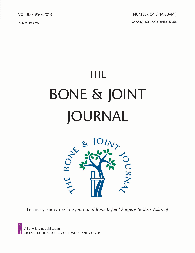
ARTHROPLASTY
Better clinical outcome with kinematically vs. mechanically aligned TKAs
Bone Joint J. 2014 Jul;96-B(7):907-13. doi: 10.1302/0301-620X.96B7.32812.120 patients with end-stage arthritis were randomized to either undergo kinematically aligned total knee arthroplasty (TKA) with patient-specific guides or mechanically aligned TKA with intramedullary instrumentation, to compare outcomes of pain, function, and range of motion after 2 years. The results indicated that clinical outcomes, proportion of pain-free patients, and flexion active range of motion all favoured patients in the kinematically alignment TKA group over patients in the mechanically aligned TKA group at the 2-year follow-up. Alignment of the knee joint and femoral component was more valgus in the kinematically aligned TKA group whereas tibial component was more varus.
Unlock the full ACE Report
You have access to {0} free articles per month.Click below to unlock and view this {1}
Unlock NowCritical appraisals of the latest, high-impact randomized controlled trials and systematic reviews in orthopaedics
Access to OrthoEvidence podcast content, including collaborations with the Journal of Bone and Joint Surgery, interviews with internationally recognized surgeons, and roundtable discussions on orthopaedic news and topics
Subscription to The Pulse, a twice-weekly evidence-based newsletter designed to help you make better clinical decisions
Exclusive access to original content articles, including in-house systematic reviews, and articles on health research methods and hot orthopaedic topics
Or upgrade today and gain access to all OrthoEvidence content for just $1.99 per week.
Already have an account? Log in


Subscribe to "The Pulse"
Evidence-Based Orthopaedics direct to your inbox.
{0} of {1} free articles
Become an OrthoEvidence Premium Member. Expand your perspective with high-quality evidence.
Upgrade Now












































































